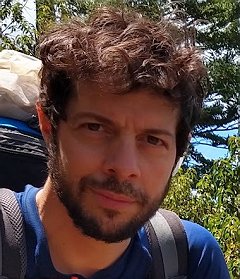A Language Based on Two Relations between SymbolsIncludes Demo
We present a language with all the power of abstraction and the simplicity of two fundamental relations: substitution and categorization. With a graphic symbol representing each one of them, we created a playful visual programming environment aimed at teaching with high expressive power. This environment includes tools to inspect the program execution and a console to try visual expressions. This is achieved without resorting to text, since the symbols are user-defined drawings. To address complex problems, the language offers another set of tools to define text-based programs. Here we show a functional prototype of our rule-based, general-purpose declarative programming language.
PhD student at the Faculty of Philosophy and Chief Teaching Assistant at the Department of Computer Science at the University of Buenos Aires. He is a playwright and theater director. His philosophical analysis has led him to join the practice of programming with the notion of scientific representation. Three areas of knowledge are what drive him today to conceive a new language: programming, philosophy and art.
Fri 9 DecDisplayed time zone: Auckland, Wellington change
13:30 - 15:00 | Future Programming Languages and Tools (2)Onward! Papers at Seminar Room G100 Chair(s): Jeremy Singer University of Glasgow | ||
13:30 30mTalk | A Language Based on Two Relations between SymbolsIncludes Demo Onward! Papers Agustín Rafael Martínez University of Buenos Aires DOI Pre-print | ||
14:00 30mTalk | Exploring Task Equivalence for Software Engineering Practice Adaptation and Replacement Onward! Papers Diana Kirk University of Auckland DOI | ||
14:30 30mTalk | The Principles of the Flix Programming LanguageVirtual Onward! Papers Magnus Madsen Aarhus University DOI | ||
